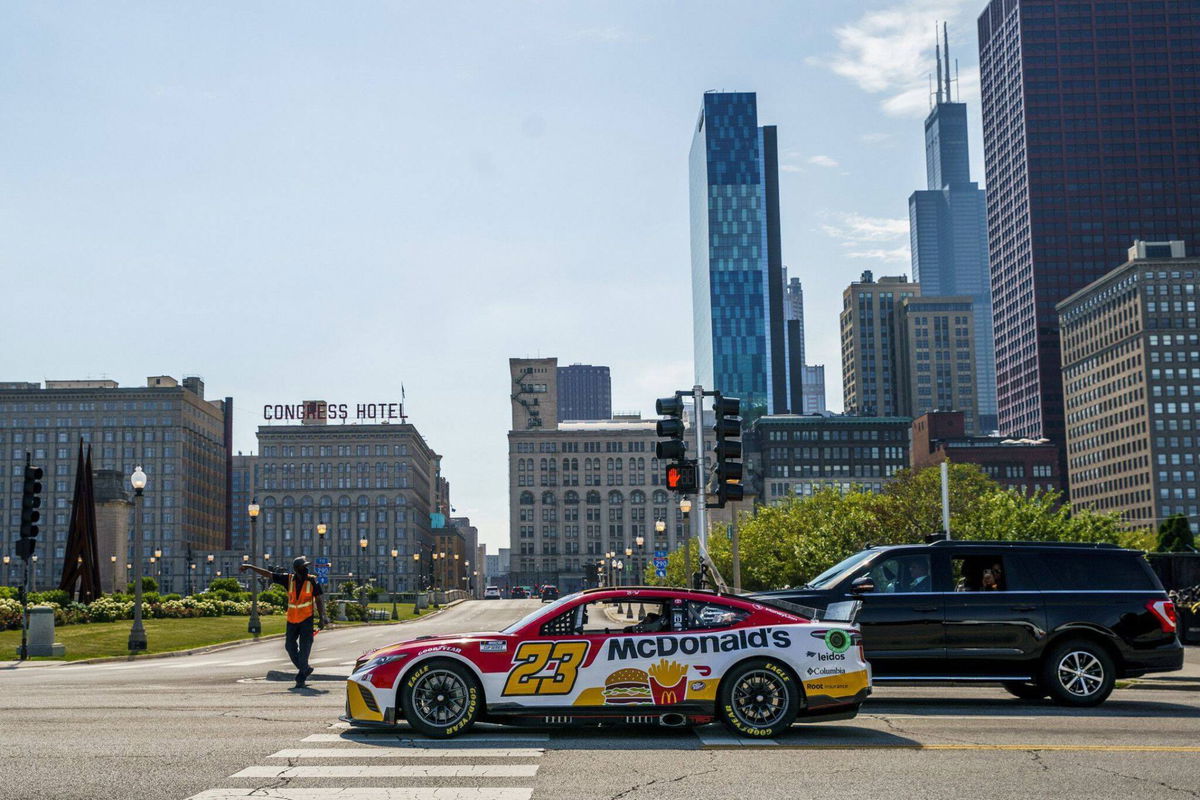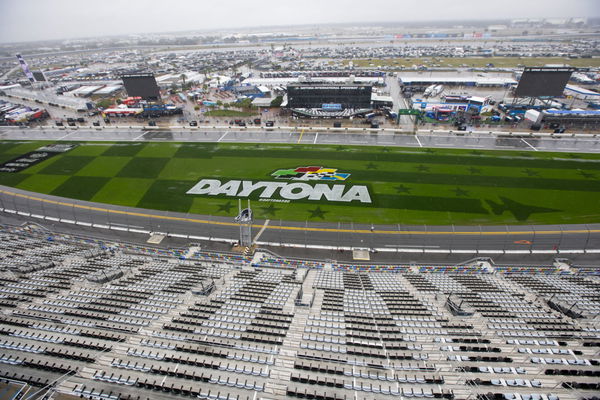
Imago
August 25, 2022: NASCAR driver Bubba Wallace drives through Grant Park on Tuesday July 19, 2022, in Chicago after Mayor Lori Lightfoot announced the city will host a NASCAR street race next year. – ZUMAm67_ 20220825_zaf_m67_027 Copyright: xArmandoxL.xSanchezx Image Credits: Imago

Imago
August 25, 2022: NASCAR driver Bubba Wallace drives through Grant Park on Tuesday July 19, 2022, in Chicago after Mayor Lori Lightfoot announced the city will host a NASCAR street race next year. – ZUMAm67_ 20220825_zaf_m67_027 Copyright: xArmandoxL.xSanchezx Image Credits: Imago
The 2025 NASCAR Cup Series season is in full swing, featuring 36 thrilling races across 26 unique tracks, a mix of tradition and innovation that keeps fans engaged. Iconic venues like Daytona International Speedway host the Daytona 500 and Coke Zero Sugar 400. It draws massive crowds, with the 2024 Daytona 500 attracting nearly 6 million viewers, despite being shifted to Monday due to rain.
Watch What’s Trending Now!
Recent additions like Iowa Speedway, returning after a long absence, and Autódromo Hermanos Rodríguez in Mexico City. Marking NASCAR’s first points-paying international race since 1958. It reflects the series’ push for diversity. The Chicago Street Course, now in its third year, adds an urban flair, proving NASCAR’s adaptability. Yet, beneath the excitement lies a sense of disappointment among fans, who had hoped for a bolder shift in the schedule.
“Would you like to see 36 races at 36 tracks?” The idea proposed by the fan aimed to eliminate repeat visits to tracks like Daytona and Talladega, instead spreading the schedule across 36 different venues. Suggested additions included Chicagoland Speedway, Fontana, Kentucky Speedway, Milwaukee Mile, Road America, Rockingham, and even Montreal for Xfinity and Truck Series.
ADVERTISEMENT
This proposal promised a more diverse calendar, celebrating NASCAR’s variety. The “new list of demands” centered on a 36-race, 36-track schedule, where each race would occur at a unique venue. Tracks like Chicagoland Speedway, dormant since 2019 but under redevelopment, and Fontana, closed since 2023 but considered for a new configuration, were prime candidates.
Kentucky Speedway, idle for the Cup Series since 2020, and the Milwaukee Mile. Recently, hosting IndyCar and NASCAR’s lower series also made the list. Road America, a fan-favorite road course, and Rockingham, active in lower series, were seen as natural fits. International options like Montreal’s Circuit Gilles Villeneuve were proposed for Xfinity and Truck Series, adding global flair. Notably, reports from The Athletic indicate NASCAR is nearing a deal for a street course race in San Diego for 2026, aligning with the proposal’s push for new markets.
As one fan put it on Reddit, “I am willing to give this a shot since I am a fan of this idea, as it means no track will have a second date. This means that Daytona, EchoPark, Phoenix, Las Vegas, Martinsville, Darlington, Bristol, Talladega, Kansas, and Charlotte will all lose one of their race dates and in turn make the schedule a lot more diverse.”
ADVERTISEMENT

USA Today via Reuters
Feb 18, 2024; Daytona Beach, Florida, USA; Overall view of empty grandstands at the start finish line in the tri-oval as it rains following the postponement of the Daytona 500 to Monday due to rain at Daytona International Speedway. Mandatory Credit: Mark J. Rebilas-USA TODAY Sports
This sentiment captures the enthusiasm for a varied calendar, reflecting fans’ love for NASCAR’s range of tracks. Yet, the challenges of implementing such a schedule, upgrading new venues, ensuring safety, and maintaining revenue proved too complex. It was an ambitious suggestion that was both welcomed and argued against by the fans online.
ADVERTISEMENT
NASCAR fans are not sold on the idea of a new track on every race weekend
One fan quipped, “What is this, Oprah? You get a race! You get a race! Everyone gets a race!” This sarcasm highlights concerns about diluting NASCAR’s quality. Major tracks like Daytona and Talladega, with an 80,000-seat grandstand (with the infield pushing the total on-site above 100k). Generate significant revenue. Adding 10 new tracks could strain the TV deal’s revenue distribution, potentially reducing funds for each event. Smaller venues might not match the viewership of marquee races, impacting the sport’s visibility.
Another fan noted, “The reality is that would spread the TV money pretty thin. You would get more attendance over the season. It almost certainly wouldn’t be enough to cover the additional operating expenses.” The regular season finale at Daytona is huge, and while many fans don’t like the Charlotte Roval, it does pull the crowd to the race track. Bristol is always going to be a hit, and the chaos at Talladega, especially deep in the season, is also anticipated. So, moving these core racing venues wouldn’t be optimal for NASCAR..
ADVERTISEMENT
Another perspective was stated. “Taking away a second Daytona (one of the better attended and watched races) and also spending hundreds of millions of dollars to fix up random tracks seems like a great business idea right off the top.” There’s a reason why NASCAR doesn’t have a plan for Fontana’s revamp; they aren’t sure if the financial investment on that track would lead to better results. This also explains why NASCAR is willing to go international or plan a street race. No repave, no restoration, just find a partner and execute the weekend.
Finally, a fan insisted. “No. I think there should be 2 dates at Daytona. The 500 and the 4th of July, two at Bristol (day and night) and two at Darlington.” These races, like Darlington’s Southern 500 with sold-out 47k-seat grandstands in 2024, are steeped in tradition. Fans value their historical significance, and NASCAR’s decision to retain them reflects a commitment to the sport’s heritage.
What is your take on this outlandish proposal, and should NASCAR try this approach once?
ADVERTISEMENT
ADVERTISEMENT
ADVERTISEMENT
ADVERTISEMENT

